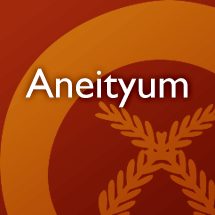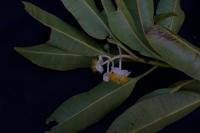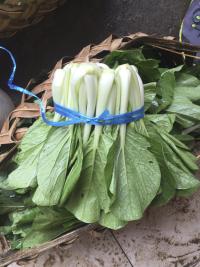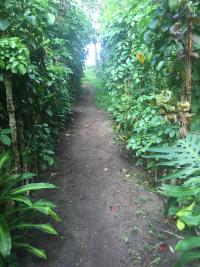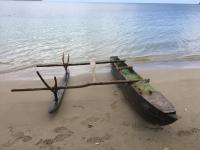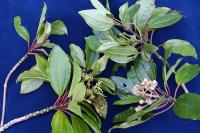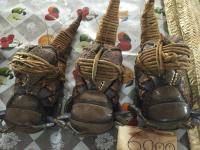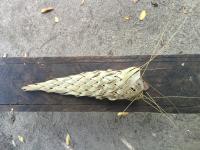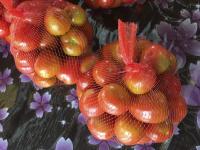An example search has returned 100 entries
atga alep
v.n. go alone
bookmarkauhorohos
v. to weed; to clear land
bookmarkdawarivi

et aparaiñ trouses tuwuna
igcaijai
n. a place up or eastward
bookmarkimtiat
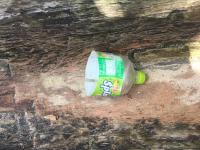
injuki
n. the afternoon
bookmarkinmauwad itoga
n. a foreign convolvulus
bookmarkinmayinpak
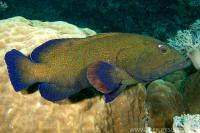
n. Peacock hind
Example: Photo by Andrew J. Green / Reef Life Survey, License: CC BY-A 3.0 via Fishes of Australia
bookmarkinmehtas
n. kind of breadfruit
bookmarkinpakanhas
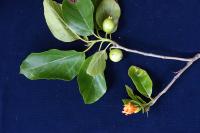
inpan
n. kind of banana
bookmarkinrokdania
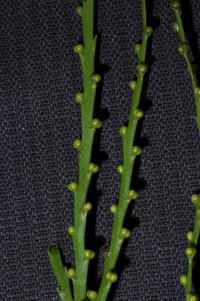
n. epiphyte on trees, growing in dense rainforest. (collection: Gregory M. Plunkett #4093)
Example: 1. Sickness blo namya. When a man accidentally has intercourse with a woman during her menstrual cycle, he can become sick. The leaves are squeezed, along with others, to produce an extraction. The dose and duration varies according to the degree of the symptoms. Further information about the preparation withheld.
bookmarkintate a nelgo waj
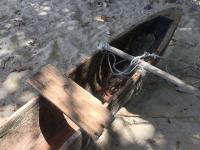
intopasyej
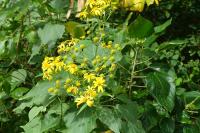
n. shrub to 2 m tall, flowers yellow. Growing along coast. (collection: Michael J. Balick #4959)
Example: The young leaves are boiled for 15 minutes and coconut milk is added to the warm leaves and this is eaten--the coconut milk it said to make the leaves taste better. New mothers are given this food as it helps them to produce more milk for their babies. As a medicine, take the young shoots, peel the outer skin off of these, macerate a 3’ piece of young stem in a small amount of water, take out the fiber, put the juice in a tablespoon and feed it to a baby that is old enough to swallow water (not a new born) when they have diarrhea. Take once daily for 2-3 days. This remedy is used for babies up to one year of age. For older babies that have diarrhea, peel the young 3’ stems and give them to the child to chew (spit out the fiber) and have them drink a small amount of water after chewing. This treatment is once daily, for 2-3 days until the diarrhea stops. For adults, take 4 young stems about 3’ long and chew these and swallow the juice, twice daily (morning and afternoon) and use until the diarrhea stops. When this plant is in flower, hunters know that the turtle has more fat and can be harvested--a calendar plant.
bookmarkkaradakoal
n. a native pudding made of taro, coconut milk, etc.
bookmarkkateupen
n. kind of taro
bookmarkleyei
n. kind of taro
bookmarkma
adj. ripe, as fruit; healed, as a wound; also "mah"
bookmarknafan
n. the name of a species of seaweed
bookmarknagdenayi
n. kind of taro
bookmarknaha
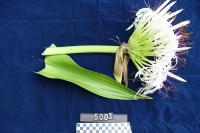
n. herb to 1 m, flowers white (collection: Michael J. Balick #5003)
Example: The leaves are used to wrap fish for cooking in an open fire. If you eat a bad fish and begin to feel the effects of it a few hours later, such as with Ciguatera illness, cut the base of the stem of this plant and let the sap drip into a half coconut shell with coconut water in it, drink the shell and it will make the person vomit out the bad food. It does not taste good but is very effective in making a person vomit as it contains a toxic compound.
bookmarknahaigjopdak
n. kind of plant, grass, or fern
bookmarknahmas
n. kind of plant, grass, or fern
bookmarknaho
n. a plant, the fruit of which is prepared like arrowroot, and used as a food for sick people
bookmarknalgaj
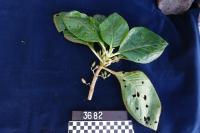
n. small treelet, 1 m tall (collection: Gregory M. Plunkett #3682)
Example: Can be used to stop pain from toothache. Break of the top growth of a branch and remove all leaves. Chew on the green stem at the site where there is a toothache. Keep the juice from chewing in your mouth for 2-5 minutes then spit the juice out. Leave the stem fibers in your mouth at the site of pain for about 20 minutes then remove. Then repeat 2 more times. This makes the tooth thinner so it breaks more easily.
bookmarknamarere
n. kind of sugarcane
bookmarknamji
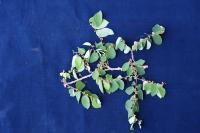
n. tree, 4 m tall (collection: Gregory M. Plunkett #3508)
Example: 1. The stems of this plant are sharpened and used to plant swamp taro or dry land taro. 2. Break small branch top put behind ear if you go to an unknown place and keep behind ear and sleep with it. If the place is safe you will sleep if it is not you will not sleep well – only behind ear when you sleep.
bookmarknamlau
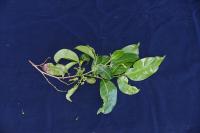
n. shrub, 2 m tall (collection: Gregory M. Plunkett #3490)
Example: 1. The larger stems of this plant can be used to build houses, for rafters. 2. It is also a good source of firewood. 3. Ancestors, before go to chief’s canal and want to talk about a complicated issue – a person would cut a branch and bring it to the sea and tap the water surface and would say what he wants, ask that he would want that issue to be solved and that others would follow his ideas and then go back to the meeting place and take stick, keep wind at his back, moving stick in all directions and then he will convince the people of his ideas. This is done by the chief’s spokesman. Helps convince the opposition. Helps keep power in hands of parent(??) chief rather than subchiefs who might have other ideas.
bookmarknapleaig
n. kind of tree
bookmarknapojev
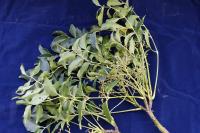
n. tree to 5 m, dbh 10 cm (collection: Michael J. Balick #4889)
Example: The leaves are used to cover meat when baking it in a stone oven (inmawum). This will soften the meat and keep it moist. Used when other species of this genus are not available, for example if you are in the bush.
bookmarknapupwi a darumea
n. kind of sugarcane
bookmarknap̃at
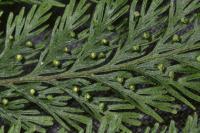
narasitai
n. chaff
bookmarknareram
n. kind of banana
bookmarknarijo
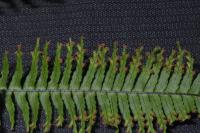
nariko cei
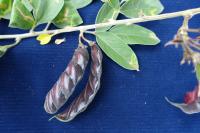
n. fence-forming shrub, 1. 5 m tall (collection: Gregory M. Plunkett #3206)
Example: 1a. Cultivated in gardens. Cook seeds of this species or eat them raw before they are fully ripened. The green pods can also be cooked in a fire and eaten. 1b. Cultivated plant for its edible seeds, can be prepared in a pot of bamboo. OR could take branches w/ seeds and put directly on the earth oven for cooking. 2. Planting this species adds nitrogen to the soil--grow it on soil that is said to be "tired."
bookmarknateng
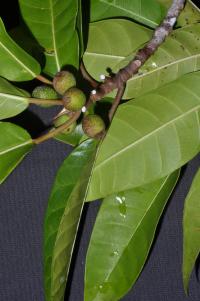
nauhap̃ apeñ
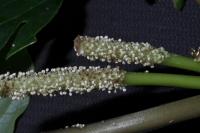
nauram milmat
n. kind of banana
bookmarkneaig ahi
n. a white coconut
bookmarknecemas moso
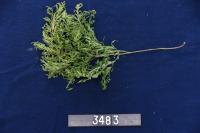
n. terrestrial plant on forest floor, growing in disturbed forest. (collection: Gregory M. Plunkett #3483)
Example: 1. This is a "message plant" that signifies that there has been a death. The person holds it or puts it on their head, goes to another person’s house and hands it to the person they wish to convey the message to, without saying anything and that person knows that someone has died. It can also be handed to that person. The person receiving the message then asks "who" and is told the deceased person’s name. 2. Use it to produce more fog on top of mountain – use w/ another plant, nap̃at (GMP 3268) – put these in a hole on the sacred stone to ferment as it fills with water. After it rots there will be a lot of fog. Name of stone = NAEMOSO. So the fog helps keep the plants moist and growing well.
bookmarknelgo waj

nemeg
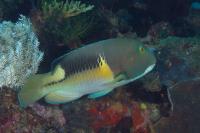
n. Anchor tuskfish, Orange-dotted tuskfish
Example: Photo by Mark Rosenstein, iNaturalist: CC BY-A-NC-SA 3.0 via Fishes of Australia
bookmarknerophat
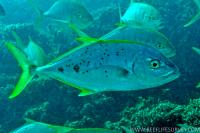
n. Yellowspotted trevally, Turrum
Example: Photo by Rick Stuart-Smith / Fishes of Australia, License: CC BY-A 3.0 via Fishes of Australia
bookmarknetet
n. the name of a tree
bookmarkniditau
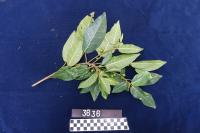
n. tree, 8 m tall (collection: Gregory M. Plunkett #3636)
Example: The green fruits are edible, as are the young leaf apices--cook these in water and eat them. The wood is used for temporary houses, for example, to provide shade in a garden. For planting taro, or any root crop, sharpen the end of a stick of this tree and use it for making holes, particuarly in river sand where some crops are planted. This tree grows near the river and is an indication that this land is good for agriculture. The wood from the tree is very good for firewood. Name means "who are you." Plant used as an indicator of a tabu place. Take a branch and put it where another person is building or gardening and there is a dispute over that area of land. When this plant is placed there the person who is using the land should stop working it.
bookmarknimtinjap
n. wind
bookmarknipji nelaneayñ
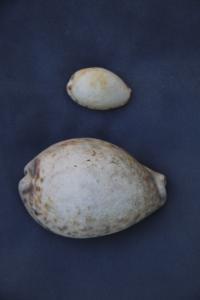
nipʧin njelas
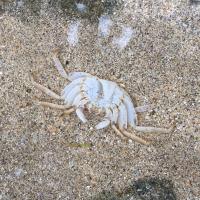
nirid unmu
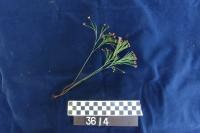
n. terrestrial fern, growing in primary rainforest. (collection: Gregory M. Plunkett #3614)
Example: People who go fishing take this plant along with other unspecified leaves, crush them and rub them on the fishing line that the person is using. This is said to attract more fish to the bait. It is also a "message plant" to be put in a person’s hat when they come back from fishing and then people know that they caught fish. Local name means "fish gill."
bookmarkniyeg
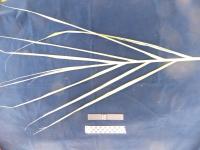
n. grass. Found in disturbed area behind the village. (collection: Ashley A McGuigan #12)
Example: 1. To cure the sea snake (nispev) curse that causes missed periods. First the husband must combine 4 young leaves of incispev and 4 young leaves of nafanu and mash and squeeze the juice into a small bamboo (1-1.5 inch diameter) The nafanu is important because it is a plant that connects to the sea. Use wildcane leaves cover the bamboo closed. Go to the sick person and unwrap the snake from her. Start from the top and let the woman drink a small part of the potion then wash her with the mixture, making sure to wash head, elbows, knees, feet, and belly. Then take a leaf of naha and break it over the woman’s belly button to break the snake off. Smash the bamboo vessel to pieces. Leave the woman there until the wash dries on her. This takes one whole day and the ceremony in the evening so she can sleep and she must not eat. This ritual is performed by men. 2. Main plant to thatch roof of local houses. 3. Collect the dry stems, tie together, use as a torch at night for walking or walking along the reef when fishing. 4. Take 1 cane and tie the leaves together and tie on a tree to indicate tabu – e.g. a citrus tree that will be ripe soon to tell people not to pick it. 5. To catch crabs just before sunset, burn the torch and shake the ashes on the rocks; come back an hour or so later and the crabs are attracted by the ashes and you can collect them. 6. Can also use to weave walls of house. 7. Women clean the leaves of the stem and use the hard part of the stem to strip pandanus leaf before weaving a basket. 8. Cut wild cane in half and sharpen the end, use this to cut the dried pandanus leaves into small strips. 9. Tie leaves into a knot and stick the knot on the kava stem; t is means that this kava goes “express” so the carrier goes to one border of a village and passes it to another person who knows it cannot stop in this village but goes to the next border and is passed on 10. This plant is a “message plant” to say “don’t stop,” referring to something being delivered.
bookmarknohos kaletonia
n. the New Caledonian banana
bookmarknomropom
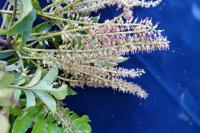
n. shrub to 2 m, flowers white (collection: Michael J. Balick #4874)
Example: This plant is an indicator of rich soil, especially up on the hills from the coast. Therefore, this is where people choose to do their gardens. This specimen is in red soil that is not rich so it does not grow tall, but in the mountains it does grow tall and that is where gardens are planted. Wood from the tree is used for carving.
bookmarknomrop̃om̃
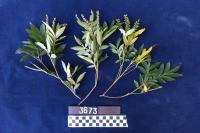
noporo pora
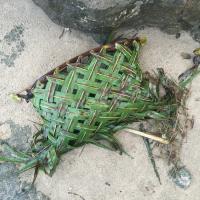
nuarin marara
n. dale
bookmarknugnyimtau noho
n. kind of palm
bookmarknup inceen
n. the rib of a leaf
bookmarknuputuligighap
n. stem of coconut leaf
bookmarknyihivac
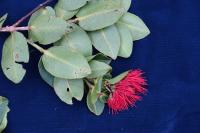
n. tree, 6 m tall (collection: Gregory M. Plunkett #3263)
Example: 1. A "calendar plant". When this flowers in the bush, and people are making their gardens in that area, it means the garden is ready to harvest. 2. Firewood, calendar, and message plant – for people who live up in the forest can see this coastal plant and when it flowers it is a good time to go fishing or to move to the coastal area for a few weeks to relax. July-August. Tide is low so everything is exposed so it is a good time to fish for there, 2 months. 3. Flowers have a nice nectar, sweet, kids drink.
bookmarktapasetarayi
n. kind of taro
bookmarktarucai
n. kind of taro
bookmarktatau

n. Blackfin barracuda
Example: Photo by Jan Messersmith, License: CC BY-SA 3.0 via Fishes of Australia
bookmarkubutpotet
adj. adjacent
bookmark